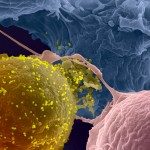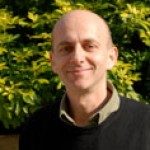Link to Pubmed [PMID] – 29846244
Curr Opin HIV AIDS 2018 Sep;13(5):383-388
PURPOSE OF REVIEW: The HIV-1 reservoir is composed of infected cells poised to replicate and spread the virus upon treatment interruption. It constitutes the main obstacle toward an HIV-1 cure. Whether marker(s) may allow the detection of cells that form the reservoir is an outstanding question. Here, we present and discuss recent advances and controversies in the identification and characterization of markers of the HIV-1 reservoir.
RECENT FINDINGS: Latently infected T cells that persist under successful therapy do not express viral antigens, making their identification challenging. HIV is not equally distributed across T cells subsets. For instance, central memory, Th17, and T follicular helper cells largely contribute to viral persistence. Recently, novel markers of the reservoir have been identified. Using various strategies, different teams have reported that surface molecules such as immune checkpoints inhibitors, CD30, or CD32a may be enriched in latently infected cells or in cells harboring viral RNA.
SUMMARY: Understanding the mechanisms underlying the presence of markers of HIV-1 infected cells will provide new insights into the formation and maintenance of the viral reservoir. These markers should also facilitate the detection of persistently infected cells in patients’ samples and in animal models, and represent potential targets for elimination of these cells.

